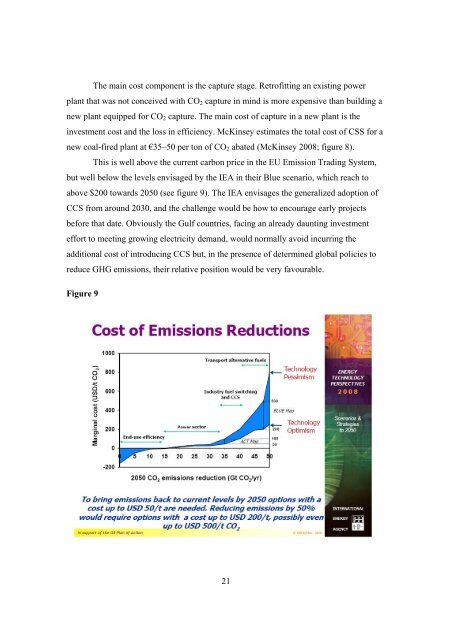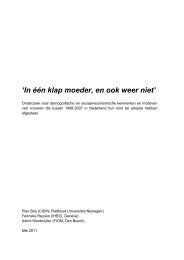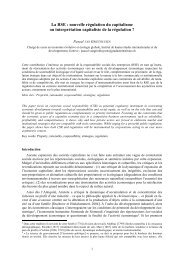PDF - Graduate Institute of International and Development Studies
PDF - Graduate Institute of International and Development Studies
PDF - Graduate Institute of International and Development Studies
You also want an ePaper? Increase the reach of your titles
YUMPU automatically turns print PDFs into web optimized ePapers that Google loves.
The main cost component is the capture stage. Retr<strong>of</strong>itting an existing power<br />
plant that was not conceived with CO 2 capture in mind is more expensive than building a<br />
new plant equipped for CO 2 capture. The main cost <strong>of</strong> capture in a new plant is the<br />
investment cost <strong>and</strong> the loss in efficiency. McKinsey estimates the total cost <strong>of</strong> CSS for a<br />
new coal-fired plant at €35–50 per ton <strong>of</strong> CO 2 abated (McKinsey 2008; figure 8).<br />
This is well above the current carbon price in the EU Emission Trading System,<br />
but well below the levels envisaged by the IEA in their Blue scenario, which reach to<br />
above $200 towards 2050 (see figure 9). The IEA envisages the generalized adoption <strong>of</strong><br />
CCS from around 2030, <strong>and</strong> the challenge would be how to encourage early projects<br />
before that date. Obviously the Gulf countries, facing an already daunting investment<br />
effort to meeting growing electricity dem<strong>and</strong>, would normally avoid incurring the<br />
additional cost <strong>of</strong> introducing CCS but, in the presence <strong>of</strong> determined global policies to<br />
reduce GHG emissions, their relative position would be very favourable.<br />
Figure 9<br />
21




